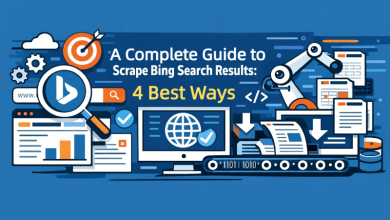
The digital economy is advancing at an unprecedented pace, continually applying pressure on organizations to keep pace. Cloud technology is the enabler that is facilitating this change and allowing organizations to innovate. It does not matter whether you are a start-up creating your first app or a global organization expanding your digital services, as cloud technology is driving innovation.
Software development, a significant part of building digital services, is not longer just about coding in a vacuum. Rather, incremental technologies, including AI, blockchain and big data, will be incorporated in the cloud infrastructure to enable innovation, in a scalable and secure way, a workforce that allows for speed, efficiency and reliability.
The Rise of Cloud-Driven Development
In the past, IT infrastructures were burdensome capital costs and fixed and time consuming. The adoption of cloud technology allows organizations access to computing power, storage and networking at their fingertips when they want it and to only pay for what they consume. Development time and costs have been reduced by cloud computing limiting work effort and – allowing developers to quickly build and deploy applications, test features instantly, with the ability to roll out updates seamlessly.
Some key advantages of cloud-driven development include:
- Scalability: Applications can handle sudden spikes in traffic without downtime.
- Cost Efficiency: Businesses only pay for the resources they actually use.
- Flexibility: Teams can innovate faster with access to modern development tools.
- Security: Cloud providers ensure compliance with global data security standards.
This has completely redefined the software development lifecycle, making it more agile and customer-centric.
Cloud and the New Era of Software Development
Software development today goes hand-in-hand with cloud technology adoption. Developers are now using cloud-native architectural patterns and microservices to develop flexible applications, a critical part of modern Full Stack Development course learning that are able to adapt to rapidly changing market needs, as opposed to traditional monolithic applications in which the complete functionality is bundled into one package. Cloud-native applications are built in a way that breaks the functionality down into smaller, manageable services that can be upgraded or replaced independently of each other.
For instance, e-commerce is able to scale via the cloud at peak shopping periods, and healthcare providers, using cloud-based applications for centralized patient data, across multiple locations, with the assurance that a cloud-based application addresses all of their applications and are HIPAA compliant. Cloud enables a cloud-based application solution to be functional, secure, sustainable, and efficient, while also allowing for cloud portability.
Powering Innovation with Cloud and Emerging Technologies
The real game-changer is the combination of cloud with new technologies:
- Artificial Intelligence (AI) & Machine Learning (ML): Cloud platforms provide tools and APIs that enable developers to leverage predictive analytics, personalization, and automation into applications quickly and easily. AI voice bots, for example, are increasingly used for automating customer support, handling repetitive queries, and improving user engagement. One notable example includes enterprise AI solutions for modern businesses that integrate seamlessly with cloud platforms to deliver scalable and intelligent applications.
- Internet of Things (IoT): Billions of IoT devices already exist and require real-time data processing, which edge computing brings to the cloud.
- Blockchain Solutions: Cloud infrastructure is also being utilized to build blockchain applications with security, transparency, and decentralization.
Some of the more prominent blockchain applications that utilize cloud infrastructure are decentralized exchange development, which use Cloud Technologies to provide accessibility of your asset and the peer-to-peer trading of your digital assets. The cloud provides the ability for ramping up your decentralized apps to continuously be available without downtime, while also providing the highest level of security protocols.
Developer’s Perspective: Building Smarter Applications
For developers, the benefits of moving to the cloud provide much greater potential opportunity but also potential challenge. For example, cloud-based development provides you with opportunities for skillsets in DevOps, containerization (Kubernetes, Docker, etc.) and serverless.
Here’s how developers are leveraging cloud to stay ahead:
- Continuous Integration/Continuous Deployment (CI/CD): Automatically integrating code and updating ensures developers have shorter release cycles.
- Global Collaboration: Cloud-hosted repositories and tools allow teams in various geographies to work together in real time.
- Performance Optimization: Developers can refine app functionality in cloud testing environments before going live.
- Security Implementation: Advanced integrations from encryption to compliance can be built into the developer’s security framework from the start.
These practices ensure that the applications being built are not just functional but also secure, scalable, and future-ready.
Cloud-Native Applications: The Next Frontier
Cloud-native applications are on the rise due to their flexibility and durability. They are built on microservices, generally in containers, allowing for horizontal scalability and automatic recovery from failures.
For enterprises, this has a direct impact on reduced downtime, faster deployments and ultimately yields better user experiences. For user communities, this means availability, speed and performance with little impact from spikes in demand.
Cloud-native applications are already impacting several industries including fintech, logistics, and education, and we expect to see an exponential increase shortly as organizations continue to discover the advantages of modular and flexible systems over traditional static systems.
Looking Ahead: The Future of Cloud and Development
Cloud-first or Cloud-native development will be prevalent in the future of software development. As organizations continue to migrate to the cloud, cloud-native developers and architects will be in high demand, as will low-code or no-code automation experts, AI professionals, or developer relations for blockchain solutions. Organizations are migrating to the cloud, which is not only an enabler, but a catalyst.
Cloud is creating an opportunity to help organizations harness audacious, transformative visions for example, an AI-assisted healthcare platform or a decentralized finance application – all purpose-built on fully scalable infrastructure that resides on public cloud.
Organizations that invest in cloud-native development today will position themselves to be at the forefront of an unprecedented wave of change in navigating the emerging and competitive digital economy that lies ahead.
Conclusion
The cloud has evolved beyond just a way to save costs, and is becoming a platform for innovating around software development. Cloud services offer scalability, security, and flexibility like no other technology while leveraging emerging technology trends.
As industries continue to change, cloud infrastructure, along with newer software development approaches will change the way digital products and services are engineered and delivered. For businesses, this creates an opportunity to not just keep up with change, but to drive change.


